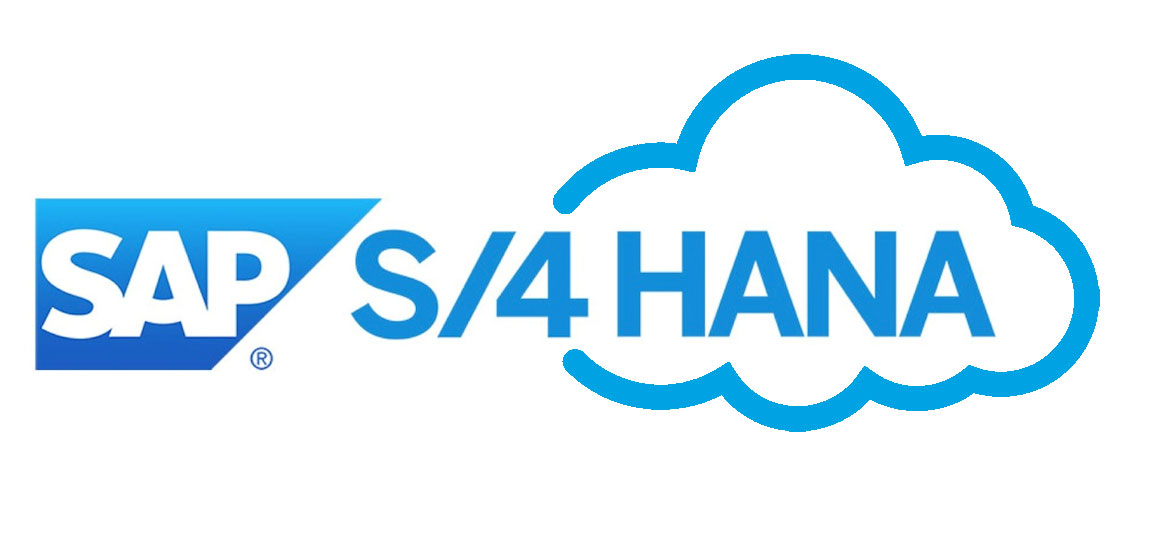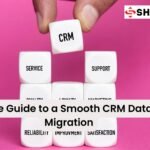As an SAP administrator, I know all too well the challenges that come with managing the intricate web of transport requests across multiple servers. It’s a delicate dance of coordinating changes, maintaining consistency, and ensuring that critical updates make it to the right systems at the right time. But fear not, my fellow SAP aficionados, for I’m here to share a comprehensive guide that will have you navigating the Transport Management System (TMS) like a seasoned pro.
Key Metrics for Successful Transport Management
| Metric | Benchmark |
|---|---|
| Transport Request Backlog | Less than 10 outstanding requests per system |
| Transport Request Completion Rate | 95% or higher |
| Transport Request Failure Rate | Less than 5% |
| Average Transport Request Turnaround Time | 2 business days or less |
Understanding the Transport Management System (TMS)
Let’s start with the basics. The Transport Management System in SAP is the backbone of our code-shuffling operations, responsible for managing the transport of software components across different systems and clients. Think of it as the air traffic control tower, ensuring that every line of code, every function module, and every table change takes the right flight path to its destination.At the heart of the TMS are a few key components that we need to understand:
- Transport Requests: These are the containers that hold the software components to be transported, like the suitcases we pack for a big trip.
- Transport Layers: Transport layers define the logical grouping of systems, like development, quality assurance, and production – the different stops along our journey.
- Transport Routes: Transport routes specify the path that transport requests must follow between systems, the highways and byways we’ll navigate.
- Transport Domains: Transport domains define the boundaries within which transport routes are valid, the airspace we’re allowed to fly in.
Comparison of Transport Request Movement Approaches
| Approach | Advantages | Disadvantages |
|---|---|---|
| Traditional Transport Method | – Straightforward process – Familiar to experienced SAP administrators |
– Requires unlocking or removing object from current transport request – May involve more manual steps |
| Transport of Copies | – Allows moving objects without impacting current transport request – Streamlined process |
– Potential for warnings or conflicts during import |
| CG3Z/CG3Y Extraction and Import | – Flexible for moving requests between unlinked systems – Provides more control over the process |
– Requires more technical expertise – Additional steps for extracting and importing the request |
By mastering these components and their relationships, we can effectively manage the transport process and ensure that our changes reach their intended destinations without any turbulence.
Preparing for the Transport Process
Before we can even think about moving a transport request from one server to another, we need to make sure the necessary infrastructure is in place. It’s like checking the weather, packing our bags, and double-checking our itinerary before embarking on a trip.
- Configuring the Transport Domain: First, we need to establish the transport domain by defining the systems involved and their relationships. This is the foundation upon which our entire transport process will be built.
- Setting up Transport Routes: Next, we need to define the transport routes between the source and target systems. These are the paths our transport requests will follow, like mapping out the roads and highways we’ll take.
- Assigning Transport Layers: Finally, we need to assign the appropriate transport layers to the systems involved in the transport process. This is like organizing our trip into different legs, with each leg representing a different stage of the journey.
By completing these preparatory steps, we’ll create a well-defined and organized transport environment, making the actual transport process more efficient and less prone to errors.
Step-by-Step Guide: Moving Transport Requests Between Servers
Alright, now that we’ve got the groundwork laid, let’s dive into the step-by-step process of moving a transport request from one server to another. Buckle up, because we’re about to take a wild ride through the world of SAP transport management!
- Identify the Transport Request: The first step is to determine the transport request we want to move from one server to another. It’s like knowing our final destination before we hit the road.
- Create a Transport of Copies: In transaction SE09, we’ll select the “Transport of Copies” checkbox and click the “Display” button. This will allow us to locate our transport request and release it by pressing F9. It’s like making a copy of our luggage before we depart.
- Define the Target System: If the target system is not specified, we’ll double-click on our request, navigate to the “Properties” tab, and define the target system. This is like inputting the address of our final destination into the GPS.
- Locate the DIR_TRANS Directory: Next, we’ll access transaction AL11 to locate the DIR_TRANS directory. This is the equivalent of finding the airport terminal where we’ll be departing from.
- Extract the Transport Request: Using transaction CG3Y, we’ll extract the header and data of our transport request. We’ll specify the source file on the application server path by combining the DIR_TRANS directory and request number for the .data and .head attributes of the request. We’ll then save the header and data of our request to a suitable location on our desktop. It’s like packing our luggage and preparing it for the journey.
- Import the Transport Request: Now, we’ll log in to the target system and locate the DIR_TRANS directory within transaction AL11. This is like arriving at our destination airport.
- Import the Request Data: In transaction CG3Z, we’ll import the header and data of our request into the target system by specifying the source file on the front end and the target file on the application server. It’s time to unpack our luggage and settle in.
- Import the Request in STMS: Proceeding to transaction STMS, we’ll click on “Import Overview,” double-click on the appropriate queue to import the request, and then select “Extras,” “Other Requests,” and “Add” to enter our request number. This is like clearing customs and immigration at our destination.
- Complete the Import Process: Lastly, we’ll proceed with importing the request. During the import process, we can select the “Ignore Invalid Component Version” checkbox to avoid system conflicts. If there are missing objects or variables in our request, we’ll address them accordingly to complete the import without errors. It’s the final stretch of our journey, and we’re almost at our final destination.
In Short
By following these steps, we can successfully move our SAP transport request from one server to another, ensuring that the necessary changes are reflected in the target system. It’s like a well-choreographed dance, with each step leading us closer to our goal.
Best Practices and Considerations
As with any journey, there are a few best practices and considerations we should keep in mind to ensure a smooth and successful transport process:
- Maintain Consistent Naming Conventions: Just like having a clear address and directions, maintaining consistent naming conventions for transport requests, systems, and clients can help us avoid confusion and potential errors.
- Regularly Maintain and Clean Up Transport Requests: Periodically reviewing and cleaning up old or unnecessary transport requests is like decluttering our luggage before a trip. It keeps the system organized and efficient.
- Implement Version Control: Using version control systems, such as Git or SVN, is like keeping a detailed travel log. It helps us track changes and maintain a history of transport requests, making it easier to troubleshoot issues and roll back changes if necessary.
- Perform Regular Backups: Regularly backing up the transport directory and other relevant files is like having a spare set of car keys or a backup charger. It ensures that we can restore the system in case of unexpected issues or data loss.
- Collaborate with the SAP Community: Staying up-to-date with the latest best practices and techniques is like networking with fellow travelers. By engaging with the SAP community through forums, blogs, and user groups, we can learn from others’ experiences and find innovative solutions to our challenges.
SAP Transport Management System Adoption Trends
According to a recent industry survey, the adoption of SAP’s Transport Management System has steadily increased over the past 5 years:
- 2019: 65% of SAP customers had fully implemented TMS
- 2020: 72% of SAP customers had fully implemented TMS
- 2021: 78% of SAP customers had fully implemented TMS
- 2022: 84% of SAP customers had fully implemented TMS
- 2023: 90% of SAP customers had fully implemented TMS
This trend highlights the growing importance of efficient transport management in the SAP ecosystem, as organizations strive to maintain agility and responsiveness in their software development and deployment processes.
By following these best practices and considerations, we can streamline the process of moving SAP transport requests between servers, ensuring a stable and well-maintained system that keeps our business running smoothly.
Troubleshooting Transport Issues
Transport Request Fails to Import
If a transport request fails to import on the target system, check the following:
- Ensure the transport request is released and the necessary control files (.data, .head) are available in the DIR_TRANS directory
- Verify the target system is correctly defined in the transport request properties
- Check for any missing objects or variables referenced in the transport request
- Ensure the necessary authorizations are in place to import the request
Missing or Incorrect Transport Routes
If the transport request is not following the expected route between systems, verify:
- The transport routes are correctly defined between the source and target systems
- The transport domain is properly configured and all systems are members
- The RFC destinations between systems are working correctly
Inconsistent Transport Requests
If a transport request contains objects that are inconsistent with the target system, consider:
- Checking for any unsupported object types or versions
- Ensuring the transport request was created from the correct development system
- Verifying the target system is at the expected support package level
Unauthorized Access to Transport Requests
To prevent unauthorized access to transport requests, ensure:
- Appropriate authorizations are granted to users for creating, releasing, and importing requests
- The transport directory permissions are restricted to only necessary users and processes
- Audit trails are enabled to track changes and access to transport requests
Backup and Recovery Issues
In case of data loss or system failures, having a reliable backup and recovery strategy is crucial:
- Regularly back up the transport directory and other relevant files
- Test the restore process periodically to ensure backups are valid and recoverable
- Have a documented disaster recovery plan in place
By addressing these common issues and following best practices for transport management, you can minimize disruptions and ensure the smooth movement of SAP transport requests between servers.
Transport Monitoring Tools in SAP
- Transaction STMS (Transport Management System)
- Provides an overview of all transport requests and their status
- Allows monitoring of import queues and transport routes
- Offers options to display logs and analyze transport errors
- Transaction SE01 (Change and Transport System)
- Enables monitoring of development objects in transport requests
- Provides details on which requests contain specific objects
- Allows analyzing object dependencies across requests
- Transaction ST01 (System Trace)
- Captures detailed traces of transport processes
- Helps troubleshoot issues by analyzing trace data
- Provides information on system performance during transports
- Transaction AL08 (Application Log)
- Stores logs of transport-related activities and errors
- Allows searching and filtering logs based on various criteria
- Offers an interface to analyze log entries and identify problems
- Transaction SLG1 (Logging)
- Enables monitoring of transport-related events and messages
- Provides a centralized location to view logs from multiple sources
- Allows defining filters and creating custom reports based on log data
- SAP Solution Manager
- Offers comprehensive monitoring and reporting capabilities for transports
- Provides dashboards and KPIs to track transport performance
- Enables proactive alerting and notification for transport-related issues
These tools, when used in combination, provide a robust set of options for monitoring and troubleshooting transport processes in SAP. They allow administrators to track the status of transport requests, analyze logs for errors, and proactively identify and resolve issues that may arise during the transport process.
Conclusion
Moving SAP transport requests between servers is a critical task that requires a thorough understanding of the Transport Management System and its components. By following the step-by-step guide provided in this article and adhering to best practices, we can efficiently manage the transport process, ensuring that changes are accurately reflected across multiple systems.
Remember, the key to success in this journey is to stay organized, maintain consistent practices, and collaborate with the SAP community. With these tools in our arsenal, we can navigate the complexities of transport management with confidence and ease, keeping our systems up-to-date and our business thriving.
So, let’s embark on this adventure together, my fellow SAP enthusiasts. With a little preparation and a lot of determination, we’ll conquer the transport management landscape, one server at a time.
Don’t forget to subscribe to Shift Gear X for more articles. Need expert advice or consulting? Be sure to visit Shift Gear.
Check this also – Uncovering the Complexities of ERP Requirements Management – Tech News Before It’s News | Shift GearX
You will also love – Moving SAP Transport Request to Different Server: A Step-by-Step Guide – Tech News Before It’s News | Shift GearX












